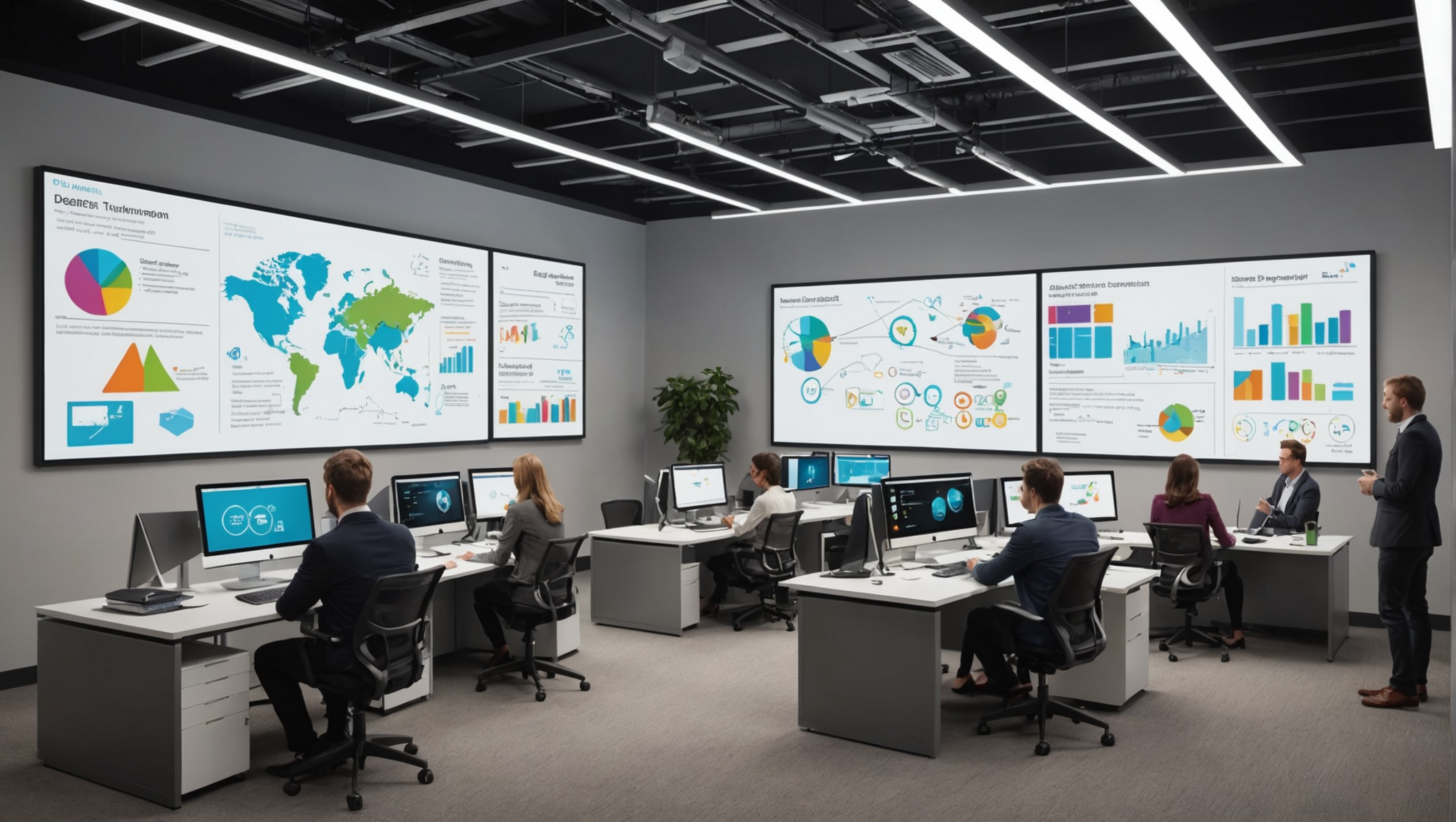In a constantly evolving world, where digital plays a predominant role, design thinking emerges as an essential method for guiding digital transformation. This set of human-centered techniques fosters creativity and innovation, allowing companies to rethink their organization and digital tools. By integrating design thinking into their processes, organizations can better understand the needs of their clients and collaborators while developing effective solutions tailored to their current challenges. The union of these two concepts represents a powerful lever for navigating the complex landscape of the digital economy.
🔥 Nous recommandons Ideamap
Ideamap est l’outil idéal pour un brainstorming ou un projet collaboratif. Grâce son interface facile et à ses fonctions IA, Ideamap booste votre créativité tout en favorisant une meilleure organisation de vos idées pour atteindre vos objectifs.
|
IN BRIEF
|
Design thinking and digital transformation form a powerful duo that enables companies to innovate and effectively adapt to new market expectations. This user-centered approach offers creative solutions while integrating modern digital tools. This article explores how these two concepts complement each other and propel organizations into a new era of competitiveness.
Design Thinking: A Methodology for Innovation
Design thinking is a creative approach aimed primarily at solving complex problems based on a deep understanding of user needs. By considering their opinions, behaviors, and expectations, companies can design more suitable products and services. This iterative process fosters the emergence of innovative ideas and rapid prototyping, allowing the testing of various solutions before their implementation.
Ideation Workshops and Their Benefits
Organizing ideation workshops is a key technique in design thinking. They bring together multidisciplinary teams to generate diverse ideas and explore innovative solutions. Through methods such as brainstorming, participants can unleash their creativity and find bold answers to current challenges. To learn more about these techniques, check out this article on ideation workshops and brainstorming techniques.
Digital Transformation: An Imperative for Modern Organizations
In a constantly evolving world, digital transformation is emerging as a major challenge for businesses. It is not limited to adopting new technologies; it also aims to rethink the entire organization and communication processes. Digital tools allow for improved interaction with customers and optimize human resource management, thus creating a smoother and more engaging experience for all participants.
Digital as a Catalyst for Innovation
Digital is revolutionizing the way we conceive and deliver products and services. By integrating technologies such as artificial intelligence and big data, companies can better understand their customers’ needs and adapt their offerings accordingly. This synergy between digital and design thinking accelerates the innovation process and proactively meets market expectations.
Design Thinking Enhanced by Digital Transformation
The interaction between design thinking and digital transformation is particularly beneficial. With digital tools, design teams can gather real-time data on users and refine their solutions. This data-driven approach enriches brainstorming sessions and contributes to a more informed creation process. To discover how this impacts the development of innovative products, read this article on the impact of design thinking on the development of innovative products.
An Essential Support Through Coaching
The role of coaching in this context cannot be underestimated. Coaching and visualization techniques help teams unleash their creative potential and overcome mental barriers. This not only enhances process clarity but also generates tangible results. To learn more about these techniques, check out the article on unleashing your creativity: coaching and visualization techniques.
In conclusion, design thinking and digital transformation prove to be powerful allies in the quest for innovation and competitiveness. They allow companies to reinvent their processes, better understand their customers, and create solutions that address real needs. Adopting this methodology is a crucial step towards the future, where agility and creativity will be decisive assets for standing out in a hyper-competitive business environment.

Conclusion: Design Thinking and Digital Transformation, An Essential Synergy
In a constantly evolving world, design thinking stands out as a major asset for supporting the digital transformation of companies. By placing humans at the heart of innovation processes, this creative approach allows for exploring the real needs of users, improving customer experiences, and optimizing digital tools. Collaboration between different teams thus becomes an essential step, fostering the emergence of innovative and sustainable ideas.
However, implementing design thinking within a digital transformation requires an iterative and flexible approach. Companies must be ready to continuously test, evaluate, and adjust their solutions to align with user expectations and market demands. In this context, introducing brainstorming methodologies and ideation workshops strengthens this collaborative approach, stimulating creativity and engagement among employees.
Moreover, integrating new technologies such as artificial intelligence and low-code into the design thinking process can significantly accelerate the transition to digital. These tools provide unprecedented opportunities for data analysis and rapid prototyping of solutions, allowing for increased responsiveness to changing user needs.
In summary, design thinking and digital transformation form a winning duo that paves the way for sustainable innovation. By fostering a culture of experimentation and creativity, companies can not only adapt to current challenges but also anticipate future developments, thereby securing their position in the market.
“`













